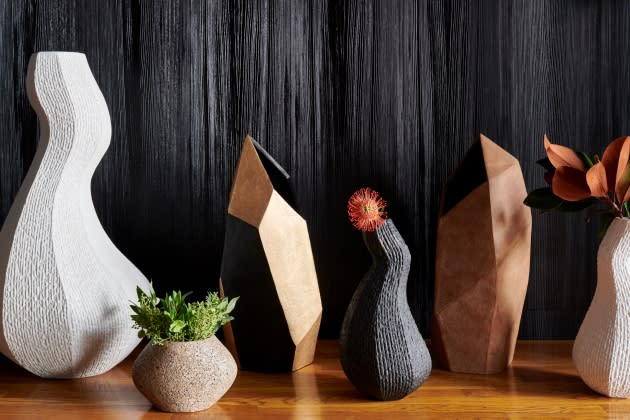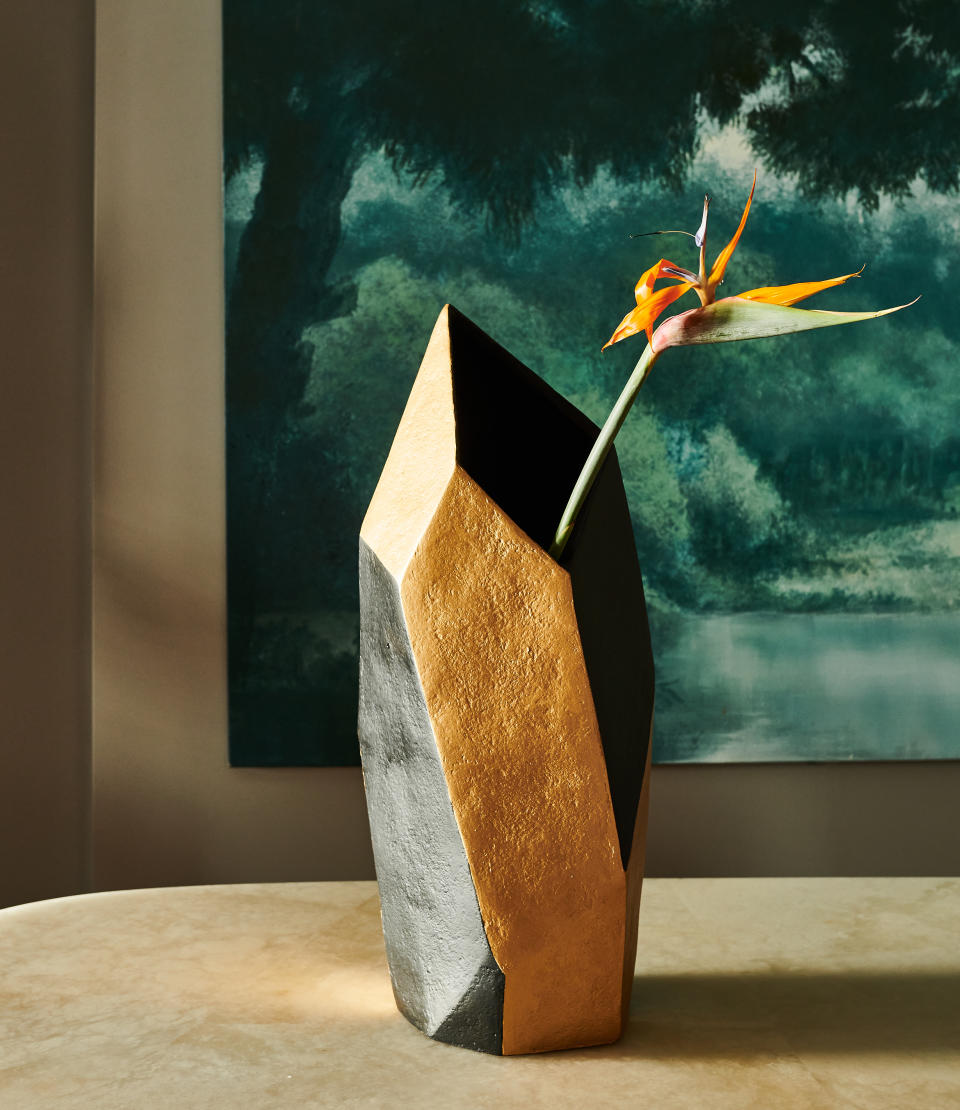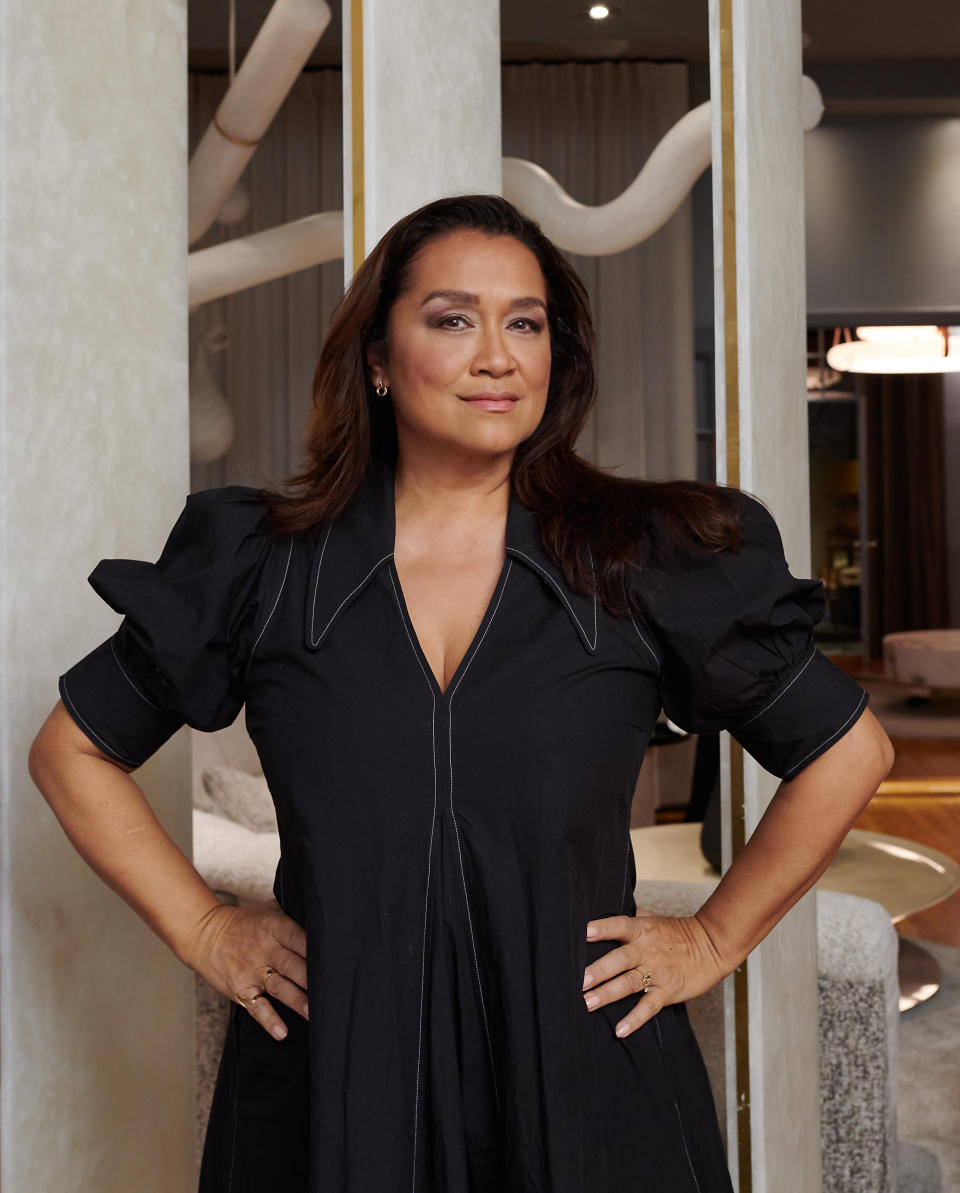Laurence Carr Launches Eco Design Brand

MILAN — Laurence Carr’s sustainable epiphany occurred in 2014, while working with a top leading interior architecture and design firm in New York City. At a time when the fashion industry was largely viewed as the culprit of the ongoing environmental crisis, Carr realized her own peers were ignoring their industry’s contribution. Conversations about an ecological approach to designing interiors were nonexistent between her colleagues, manufacturing reps, architects and designers, she reminisced.
“As a global citizen who has lived on four continents, as a designer, and as a mother of three children, I wanted a career that had a more meaningful legacy than simply beautifully designed spaces and products. I wanted to be part of solving the problems these industries were creating and foster a positive impact that would live on much longer than my own efforts,” said French-born Carr, who is the founder and chief executive officer of her regenerative design firm Laurence Carr Inc. and host of Chez Laurence — an original series aired on the sustainable network EarthxTV. Her show highlights the urgent need for innovation toward circularity and sustainability in the design and furnishing industries.
More from WWD
Fast forward nearly a decade later to this month’s launch of Studio Laurence, a sustainable home goods brand specializing in mindful luxury. Earlier this week, Carr unveiled her new New York City-based brand and its capsule collection of 12 vessels made from recycled, cradle-to-cradle materials in collaboration with Nature’s Legacy, a B-Corporation certified sustainable manufacturing company based in the Philippines that promotes circularity, accountability and transparency.
The aesthetic embodies her “21st Century Eclecticism,” and combines essentialist luxury, contemporary aesthetics and biophilia — the latter a term coined by late Harvard naturalist Dr. Edward O. Wilson, who presented the hypothesis as humanity’s innate desire to connect with nature.
In line with current trends, Carr’s products reflect the transcendental approach to design and objects sweeping across the Western world, from the design hubs and showcases from the Netherlands to Milan and from Copenhagen to New York City.

The collection, which imbues luxury with circularity, incorporates durable biomaterials like Nucast, a patented reengineered recycled paper-based composite rendered 100 times more durable and recyclable than traditional stone and metal materials. With names that conjure the wonders of nature like Feather and Stem, vases and objects come in neutral hues including whitewash, gray, black, natural, brown and gold.
“These practices embrace the upcycling of existing materials over the harvesting and use of raw materials. They innovate fresh, healthy options to replace unhealthy or harmful older alternatives, and they imagine and employ closed loop systems that are intentional about reducing or eliminating waste completely,” concluded Laurence, a member of the United Nations Conscious Fashion and Lifestyle Network advisory committee and sustainability ambassador to Paris-based design fair Maison & Objet Sustainability.
Carr describes as closed-loop a system in which waste is minimized (or designed out of the process completely) and resources are continually reused or recycled. In other words, sustainable design is mainly focused on reducing harm, while circular design is about reducing harm and reversing it to create a positive impact.
Sector wide, the home and interiors industry has not avoided criticism as the ongoing environmental crisis unravels. A recent report by the U.S. Environmental Protection Agency on durable goods found that furnishings waste destined for landfills has risen nearly 400 percent compared to 1960. Across the board, big retailers and niche brands alike have been working to reduce the industry’s negative impact on the environment, reducing textile waste, limiting water pollution and unsafe labor conditions.

Carr echoed this, explaining that the built environment generates nearly 50 percent of annual global CO2 emissions. Textile waste accounts for 5 percent of landfill space, and global building floor area is expected to double by 2060. “It’s the equivalent of adding an entire New York City to the world, every month, for 40 years.”
Zara Home, which is owned by Inditex, has embraced natural materials like linen, cotton and oak, upcycling offcuts and reusing discarded materials. Earlier this month, Williams Sonoma launched GreenRow, a home goods and furnishing brand that makes enduring, “heirloom” products. In April, Italian bedding, bath, living and leisurewear-maker Frette stepped into the sustainable arena with a capsule collection that was showcased during Milan’s Design Week.
According to Carr, there are glimmers of hope on the horizon. “And I’m thrilled to see that recently, sustainability and circularity are becoming more mainstream. We have come a long way, and I can’t wait to see how much further we can progress,” she enthused.
Introducing another brand into a world saturated with product may seem a daunting task to skeptics, but Carr insists her circularity approach and use of healthy materials amid an era in which science is actively advancing upcycling and inventing solutions that have the potential to shift the impact of the built environment design industries have the power to reverse the damage.
“The benefits of each of these practices don’t just add up, they compound, to not just prevent ecological harm but indeed reverse it.”
Best of WWD
